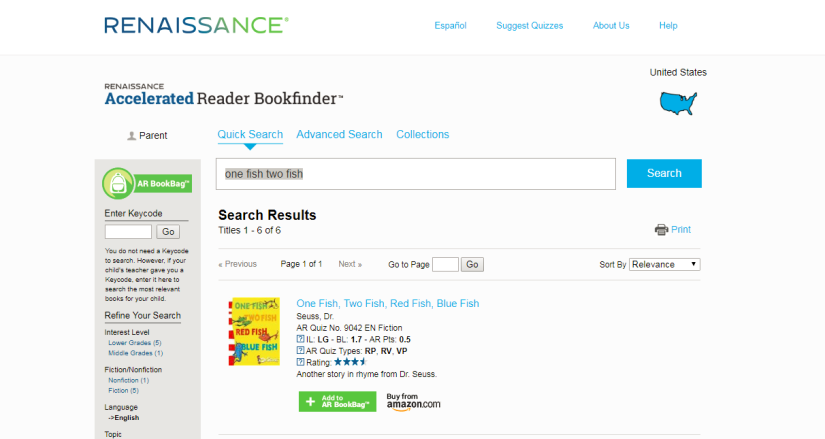Little Man made some nice progress in English reading lately. Thought I would share some notes on here for others who are supplementing English at home as well.
This is Part III of my English reading posts. Previous posts: How to Teach Phonics and English Reading: Road to Fluency.
After putting a halt to English reading for the last ten months to focus on Chinese, I’ve gradually introduced more English back into our lives. We live in the USA after all and English has always been my priority. Truth be told, I view Chinese as a second language and more “extracurricular”.
Little Man has strong reading ability in English but does not often choose to read. I have some friends who tell me their kids read for hours and hours with no prompting whatsoever. Lucky them! My son happens to be a very active boy with limited attention span for books. It’s not that he doesn’t like them, it’s that he would rather be doing something else.
Tip #1: Remove Distractions
My son used to have an hour of screen time in the morning. On the advice of some good friends, I cut out that screen time. I also stopped buying him as many toys as I used to. The effect of reducing screens and toys is… he now spends more time reading. Voila!

Tip #2: Read, Read, Read (duh!)
From the day my son was born, I followed the pediatrician recommended 20-30 mins reading to him every day. It was not until recently that I realized that is grossly insufficient! My new standard is doing what other successful parents do, aiming for 2-3 hours a day.
Tip #3: Build Good Habits
My son used to only read before bedtime and never at any other time during the day. Since reading this excellent post by Growing Hearts 123, I implemented reading 3x per day: when he wakes up in the morning, before afternoon snack, and bedtime. He quickly got used to his new routine, kids learn fast! My friend Julie @ Motherly Notes says it only takes 21 days for kids to develop a new habit.

I also got him a timer to keep track of his reading time. He absolutely loves this little timer from Daiso and uses it all the time. He wakes up in the morning and immediately sets the timer and starts reading.

We started a reading chart in June with a special treat every 1000 minutes he reads. He was really into it at first but now rarely remembers to color his squares. He is still reading >100 minutes a day, but doesn’t need the prize anymore!!!!! That is power of habit.
Tip #4: Illustrated Novels
Graphic novels (different from comics) and heavily-illustrated chapter books have turned out to be a good bridge for him towards text-only chapter books. It takes kids a while to develop the skills to comprehend longer and more complex plots, so having more pictures is helpful and of course fun to look at.
It also looks less intimidating. Many kids see a whole page of text and immediately freak out.

Little Man has been a big fan of Captain Underpants for a long time and he recently enjoyed Usborne illustrated books, Amulet (graphic novel), Boxcar Children (graphic novel), 13-Story Treehouse, etc.


Tip #5: Choices
I suggest you borrow from the library so you can try everything for free. I find that my son is not so good at selecting chapter books for himself at the library. Instead, I do a bit of googling to find out appropriate books and pre-select a few series I think he would like. It is much easier for him to choose from 2-4 options than the 1000 options at the library.

Note: I am often wrong about what my child might like. I thought he would love funny stories like Junie B. and My Weird School. Nope! Instead he likes stuff like Greek Myths and Bible stories. So try everything, even if you don’t think your kid will like it.
Tip #6: Audiobooks / Read Aloud
And finally, most important tip. The way to transition from illustrated chapter books to text-heavy chapter books is… read them to your kid. Be a salesperson! Sell the book! Suck them in! When I think back to all the books I loved as a kid, they were all “promoted” to me by others.
Highly recommend for all parents to read Jim Trelease’ The Read-Aloud Handbook. I’ve owned this book for a couple years and still gain so much every time I re-read it. In it he talks about how important it is to read chapter books to young children, starting from 3 or 4 years old, to train their listening skills. I wish I did more of this when he was younger.

True Story: Last week I got the A-Z Mysteries audiobooks to play in the car. After listening to it, my son is now zooming through the books, reading one every day.

The basic principle is, keep reading harder books to your kids and they will read harder books to themselves. I do this for Chinese as well.
Questions? Comments? You can leave me a message on Facebook or Instagram.




















































 GAHHHHHHHHHHH!!!!!!
GAHHHHHHHHHHH!!!!!!















